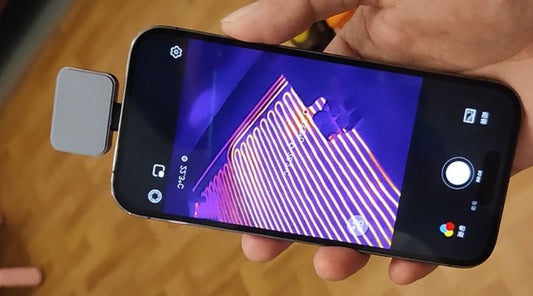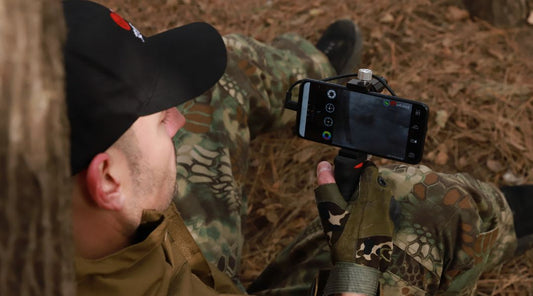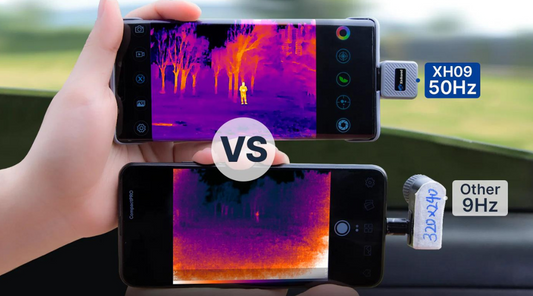Best Use to Enhance Heating System Inspection with Thermal Imaging
Imagine having the power to see beyond the visible, like a superhero with a special ability. Well, maybe you can't leap tall buildings in a single bound, but you can certainly unleash the power of thermal imaging to become a superhero in the world of heating system inspections. Today, we'll explore how thermal imaging is revolutionizing the way we inspect heating systems, making it more accurate, efficient, and safer.
Benefits of Thermal Imaging in Heating System Inspection
When it comes to inspecting your heating system, you want precision and reliability. Here's how thermal camera delivers:
- Detecting Hidden Issues: Thermal imaging allows you to spot problems that remain invisible to the naked eye. It can reveal concealed leaks, faulty electrical connections, and even insulation gaps.
- Early Detection of Potential Problems: By identifying issues at an early stage, you can prevent costly breakdowns and ensure your heating system's longevity.
- Cost Savings in the Long Run: Thermal imager promotes preventive maintenance, saving you money on repairs and improving your system's energy efficiency.
- Enhancing Safety and Reducing Risks: It's not just about saving money – thermal imaging can also identify fire hazards and reduce the risk of carbon monoxide leaks.

Key Components of a Thermal Imaging Inspection
In the world of thermal cameras, success hinges on understanding and leveraging its critical components. Let's delve deeper into these key elements:
- Thermal Imaging Equipment Overview: At the heart of a thermal imager inspection is the specialized thermal camera. These cutting-edge devices are equipped with infrared sensors that can detect and measure temperature variations. They capture the heat radiation from objects, turning it into vibrant, color-coded images. These images are the superheroes of thermal imaging, revealing temperature differences in a way our eyes never could.
- How Thermal Cameras Work: Think of thermal cameras as the translators of temperature. They convert thermal energy into visual data. This means you can 'see' heat. These cameras work by detecting the emitted infrared radiation, which corresponds to the temperature of the object being observed. For example, in the White Hot palette, the warmer the object, the brighter the image color.
- Common Problem Areas for Heating Systems: Knowing where to focus your thermal camera is vital. It's like having a treasure map to potential issues. Common culprits include furnaces, ductwork, and radiators. By targeting these areas, you can pinpoint anomalies, such as clogs, leaks, or faulty components, that might escape conventional inspection.
These three components, working in harmony, provide a holistic view of your heating system. With the help of a thermal camera, you're not just inspecting; you're revealing a world of hidden information, safeguarding against potential problems, and ensuring your heating system operates at its best.

Best Practices for Conducting a Thermal Imaging Inspection
Here's your roadmap to a successful thermal imaging inspection:
- Pre-inspection Preparations: Safety comes first. Take precautions and ensure your thermal camera is calibrated.
- Inspecting Heating System Components: Go through your heating system piece by piece, capturing thermal images.
- Recording and Documenting Findings: Record your findings and analyze the thermal images for temperature anomalies.
- Reporting and Recommendations: Present the results to your clients and suggest repairs or improvements.

Comparing Thermal Imaging to Traditional Inspection Methods
When it comes to heating system inspections, a crucial question arises: should you stick with tradition or embrace the innovative world of thermal imaging? Let's break down the comparison.
- Cost-Effectiveness: Traditional inspections can sometimes be a budget-friendly option, but they may miss hidden issues. Thermal imagers may have an initial cost but can save you a fortune in the long run by spotting problems before they escalate. It's an investment in peace of mind.
- Time Efficiency: Traditional inspections can be time-consuming and invasive, requiring dismantling or significant disruption. On the other hand, thermal imaging is non-invasive, quick, and efficient. You can inspect your heating system without turning your home into a construction site.
- Detecting Hidden Issues: Here's where thermal imager shines. Traditional inspections often rely on visible clues and can miss concealed problems. A thermal camera, however, sees beyond what the eye can, making it your superhero in finding hidden faults like insulation gaps, leak sources, or faulty electrical connections.

In the end, the choice between traditional and thermal imaging inspections boils down to your priorities. If you value precision, early detection, and long-term cost savings, thermal imaging is the clear winner. It's like upgrading from an old map to GPS – you'll never go back once you've experienced the difference.
Choosing the Right Thermal Imaging Equipment
Selecting the right thermal camera is crucial. Consider factors like resolution, temperature range, and portability. Xinfrared thermal cameras are superior to others in their price range in every way, whether it is thermal resolution, temperature accuracy, temperature range, refresh rate, or analysis software. It is worth mentioning that the analysis software that comes with the Xinfrared camera is free of charge.
Training for Thermal Imaging Inspectors
Don't forget the importance of proper training. Look for recognized certification programs to ensure you're equipped with the skills needed to perform thermal imaging inspections effectively. Or bookmark our website, our blog will continuously share content about thermal cameras that will be of great help to you.
In a world where precision and efficiency are valued, thermal imaging is a game-changer for heating system inspections. It uncovers hidden problems, saves you money, and enhances safety. Embrace this technology to become a superhero in the world of heating system maintenance.




